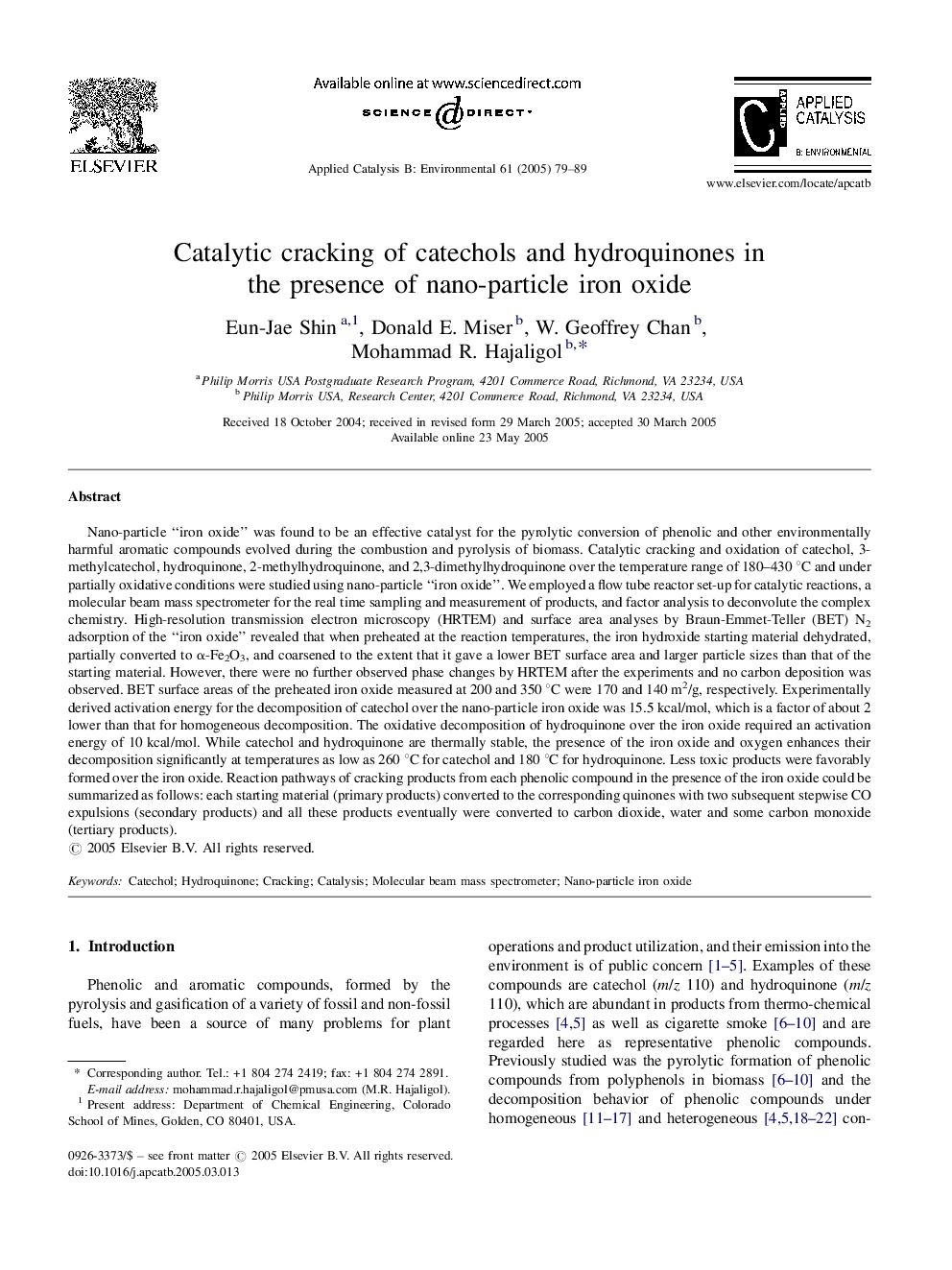| کد مقاله | کد نشریه | سال انتشار | مقاله انگلیسی | نسخه تمام متن |
|---|---|---|---|---|
| 9609782 | 46537 | 2005 | 11 صفحه PDF | دانلود رایگان |
عنوان انگلیسی مقاله ISI
Catalytic cracking of catechols and hydroquinones in the presence of nano-particle iron oxide
دانلود مقاله + سفارش ترجمه
دانلود مقاله ISI انگلیسی
رایگان برای ایرانیان
کلمات کلیدی
موضوعات مرتبط
مهندسی و علوم پایه
مهندسی شیمی
کاتالیزور
پیش نمایش صفحه اول مقاله

چکیده انگلیسی
Nano-particle “iron oxide” was found to be an effective catalyst for the pyrolytic conversion of phenolic and other environmentally harmful aromatic compounds evolved during the combustion and pyrolysis of biomass. Catalytic cracking and oxidation of catechol, 3-methylcatechol, hydroquinone, 2-methylhydroquinone, and 2,3-dimethylhydroquinone over the temperature range of 180-430 °C and under partially oxidative conditions were studied using nano-particle “iron oxide”. We employed a flow tube reactor set-up for catalytic reactions, a molecular beam mass spectrometer for the real time sampling and measurement of products, and factor analysis to deconvolute the complex chemistry. High-resolution transmission electron microscopy (HRTEM) and surface area analyses by Braun-Emmet-Teller (BET) N2 adsorption of the “iron oxide” revealed that when preheated at the reaction temperatures, the iron hydroxide starting material dehydrated, partially converted to α-Fe2O3, and coarsened to the extent that it gave a lower BET surface area and larger particle sizes than that of the starting material. However, there were no further observed phase changes by HRTEM after the experiments and no carbon deposition was observed. BET surface areas of the preheated iron oxide measured at 200 and 350 °C were 170 and 140 m2/g, respectively. Experimentally derived activation energy for the decomposition of catechol over the nano-particle iron oxide was 15.5 kcal/mol, which is a factor of about 2 lower than that for homogeneous decomposition. The oxidative decomposition of hydroquinone over the iron oxide required an activation energy of 10 kcal/mol. While catechol and hydroquinone are thermally stable, the presence of the iron oxide and oxygen enhances their decomposition significantly at temperatures as low as 260 °C for catechol and 180 °C for hydroquinone. Less toxic products were favorably formed over the iron oxide. Reaction pathways of cracking products from each phenolic compound in the presence of the iron oxide could be summarized as follows: each starting material (primary products) converted to the corresponding quinones with two subsequent stepwise CO expulsions (secondary products) and all these products eventually were converted to carbon dioxide, water and some carbon monoxide (tertiary products).
ناشر
Database: Elsevier - ScienceDirect (ساینس دایرکت)
Journal: Applied Catalysis B: Environmental - Volume 61, Issues 1â2, 27 October 2005, Pages 79-89
Journal: Applied Catalysis B: Environmental - Volume 61, Issues 1â2, 27 October 2005, Pages 79-89
نویسندگان
Eun-Jae Shin, Donald E. Miser, W. Geoffrey Chan, Mohammad R. Hajaligol,